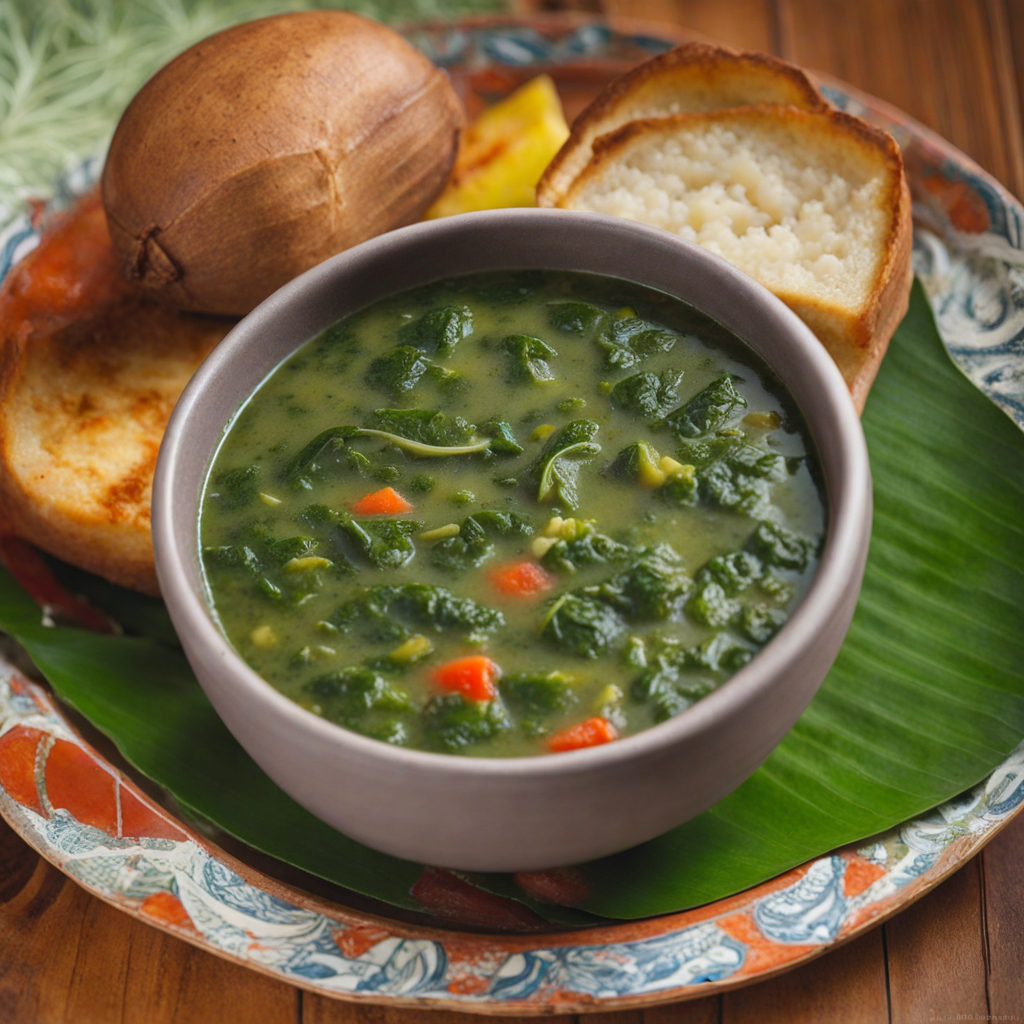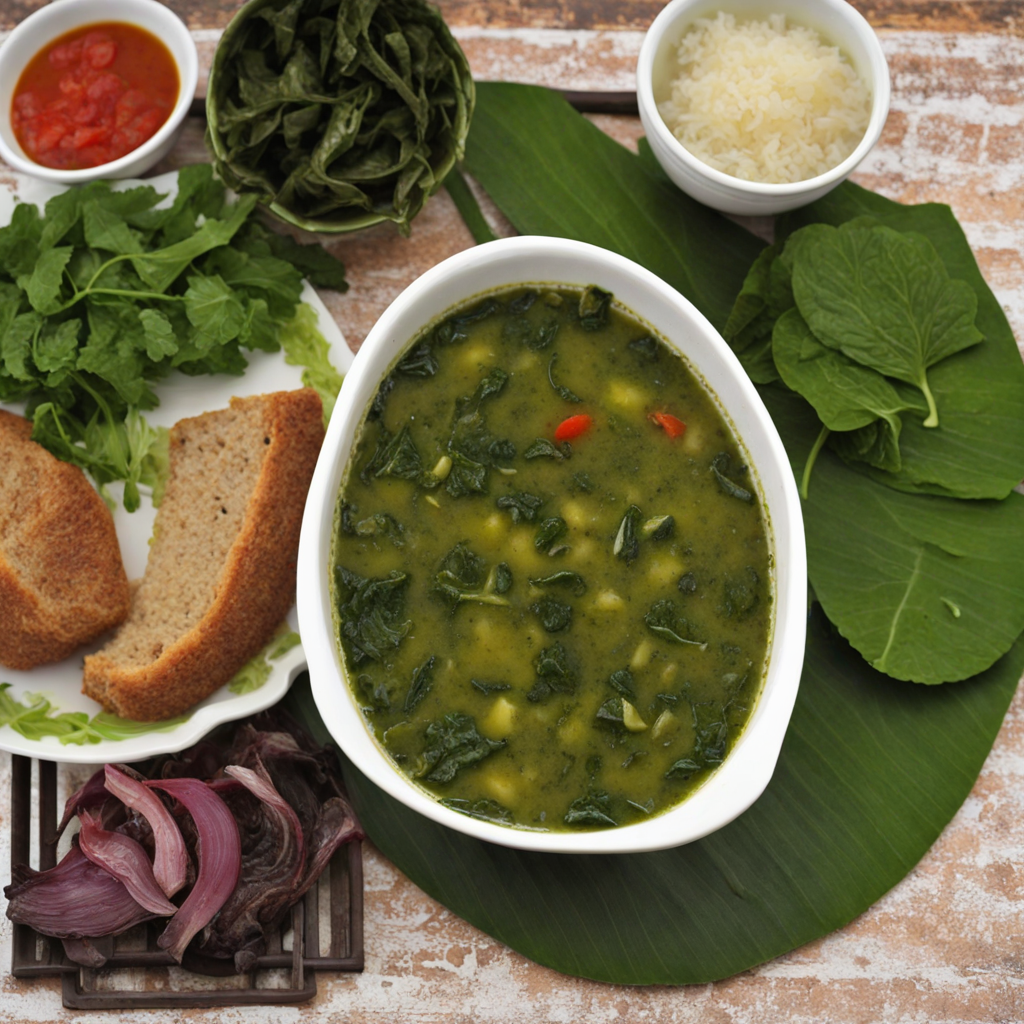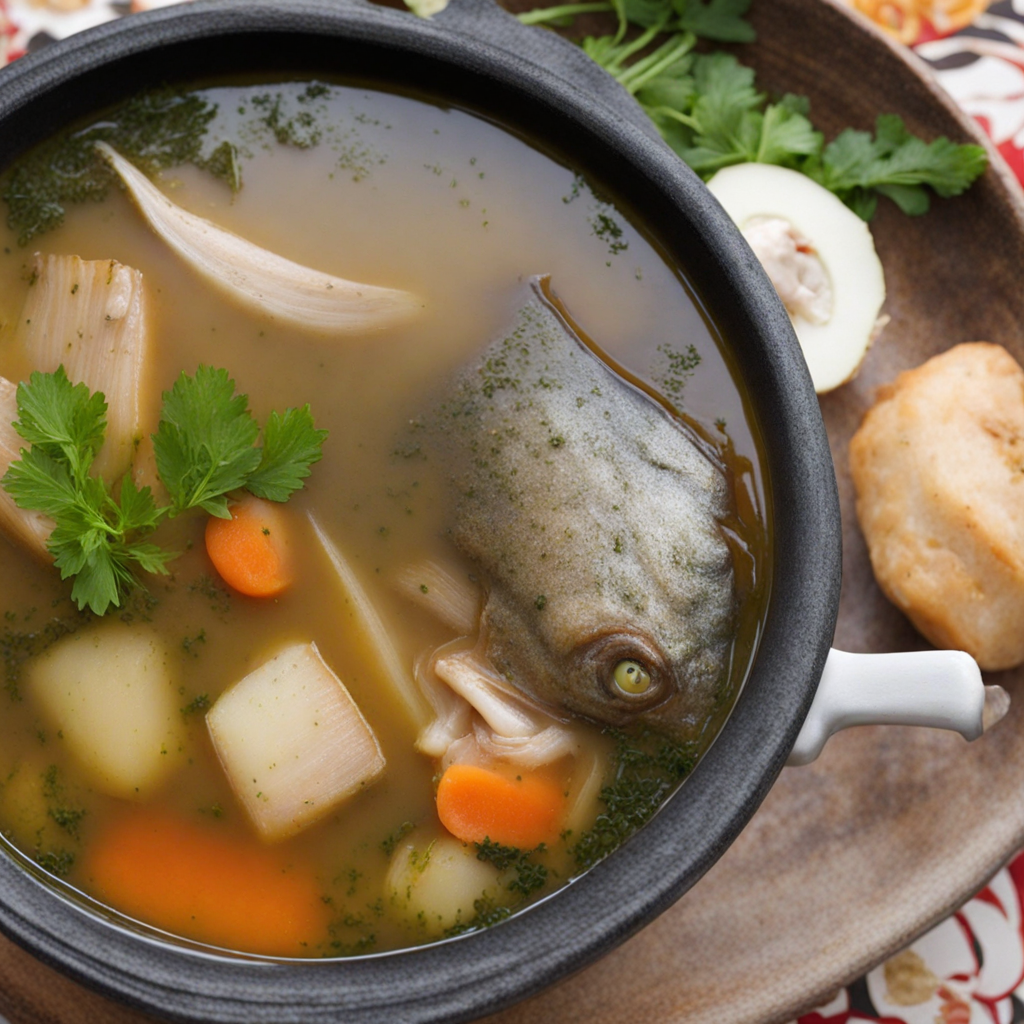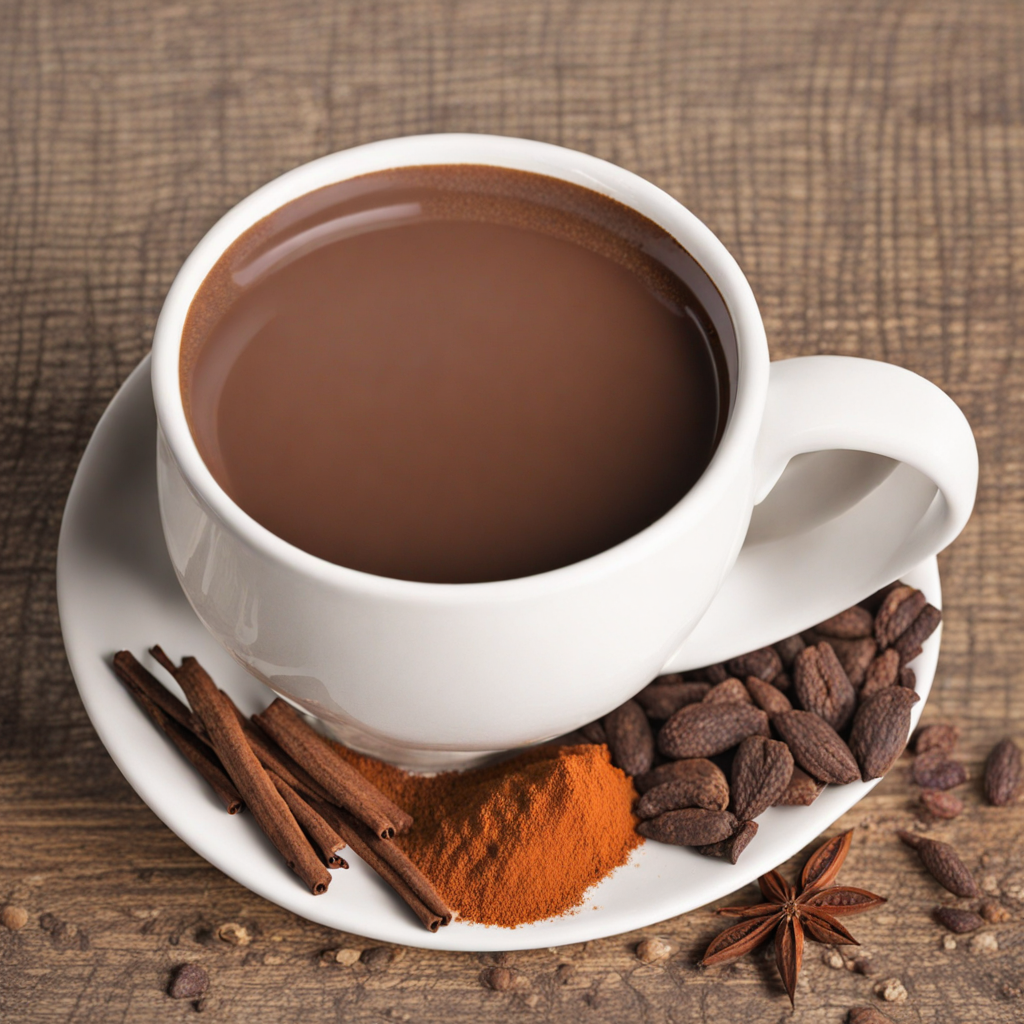Callaloo Soup
Callaloo Soup is a vibrant and hearty dish that embodies the rich culinary heritage of Dominica. This soup is primarily made from callaloo, which is the leafy green of the taro plant, often complemented by a medley of vegetables such as onions, garlic, and tomatoes. The greens are simmered until tender, allowing their earthy flavors to meld beautifully with the other ingredients. The result is a thick and creamy texture that feels nourishing and comforting, perfect for warming up on a breezy evening. What sets Callaloo Soup apart is its use of local seasonings and spices that elevate the dish to new heights. Fresh herbs like thyme and scallions are often added, infusing the soup with a fragrant aroma that tantalizes the senses. Additionally, a splash of coconut milk lends a hint of sweetness and richness, making each spoonful an indulgent experience. For those who enjoy a bit of heat, some recipes incorporate Scotch bonnet peppers, providing a spicy kick that can be adjusted to personal taste. Callaloo Soup is not just a dish; it’s a celebration of Dominica’s agricultural bounty and culinary creativity. It is often served as a comforting starter in gatherings, showcasing the island's commitment to using fresh, locally-sourced ingredients. Each bowl is a vibrant green, reflecting the lush landscapes of Dominica, and it invites you to savor the unique flavors of the Caribbean. Whether enjoyed on its own or paired with some crusty bread, Callaloo Soup is a delightful way to explore the essence of Dominican cuisine.
How It Became This Dish
The Rich History of Callaloo Soup in Dominica Callaloo soup, a vibrant and flavorful dish, has its roots deeply embedded in the rich cultural tapestry of Dominica, a small island nation in the Caribbean. Known for its lush landscapes and diverse ecosystems, Dominica is often referred to as the "Nature Isle." Here, the culinary tradition is a reflection of the island's history, geography, and the blending of cultures that have shaped its identity. Callaloo soup not only serves as a culinary staple but also symbolizes the island's resilience, community, and rich agricultural heritage. #### Origins of Callaloo The term "callaloo" is derived from the West African word "calalu," referring to the edible leaves of the taro plant. The dish itself has origins that can be traced back to the African slaves who were brought to the Caribbean during the Transatlantic Slave Trade. These enslaved individuals brought their culinary practices, including the use of leafy greens, which they adapted using local ingredients available on the islands. In Dominica, the primary ingredient of callaloo soup is the leaves of the dasheen plant, also known as taro. Dasheen is a staple crop in the Caribbean and has been cultivated for centuries. The soup can also include other greens like spinach or amaranth, showcasing the island’s agricultural diversity. As the island’s population grew and changed, so did the ingredients and flavors of callaloo soup, incorporating influences from Indigenous peoples, European colonizers, and other immigrant communities. #### Cultural Significance Callaloo soup holds a special place in the hearts and homes of Dominicans. It is often served at family gatherings, celebrations, and communal events, representing unity and togetherness. The soup is rich in nutrients and flavors, making it not only a hearty meal but a source of sustenance for families. It is often prepared in large quantities, allowing families to share it with neighbors and friends, thus reinforcing community bonds. Moreover, callaloo soup is more than just a dish; it is a cultural symbol of Dominica’s identity. The soup reflects the island’s agricultural bounty, as it is typically made with locally sourced ingredients. This connection to the land is crucial in a culture that values sustainability and respect for nature. The preparation of callaloo soup often becomes a family affair, with generations coming together to cook and share stories, reinforcing familial ties and cultural heritage. #### Development Over Time As Dominica navigated through colonization, independence, and the influences of globalization, callaloo soup evolved in different ways. The arrival of Europeans brought new ingredients such as coconut milk, which became a popular addition to the soup, enhancing its creamy texture and flavor. The infusion of spices and herbs, such as thyme, scallions, and garlic, reflects the culinary practices of the island’s diverse population. In the 20th century, as Dominica began to carve out its identity post-independence in 1978, callaloo soup took on additional layers of meaning. The dish became a symbol of nationalism, with many Dominicans taking pride in their local cuisine as a representation of their cultural identity. The annual World Creole Music Festival, among other cultural events, often features callaloo soup as a highlight, showcasing its importance in the celebration of Dominican culture. #### Modern Interpretations In recent years, there has been a resurgence of interest in traditional Caribbean dishes, including callaloo soup. Chefs and home cooks alike have begun to experiment with the dish, introducing modern twists while maintaining its traditional roots. For example, some chefs now incorporate seafood like crab or shrimp into the soup, reflecting the island's rich marine resources. Others have introduced health-conscious variations, such as using low-sodium broths or plant-based ingredients to cater to contemporary dietary preferences. The rise of the farm-to-table movement has also contributed to the renewed appreciation for callaloo soup. Many restaurants and food enthusiasts emphasize the importance of sourcing ingredients locally, which aligns with the original spirit of the dish. This movement has also encouraged younger generations to reconnect with their culinary heritage, learning to prepare callaloo soup and other traditional dishes from their elders. #### Global Recognition As the world becomes more interconnected, Dominican cuisine, including callaloo soup, has gained international attention. Food festivals, culinary tours, and social media have played a pivotal role in introducing the dish to a broader audience. As travelers seek out authentic culinary experiences, callaloo soup has become a must-try dish for those visiting Dominica and the wider Caribbean region. Food bloggers and chefs have also taken to social media platforms to share their interpretations and recipes for callaloo soup, further promoting the dish to a global audience. This exposure has sparked interest in Dominican culture, encouraging people to explore its history, traditions, and culinary practices. #### Conclusion Callaloo soup is more than just a dish; it is a narrative of Dominica’s history, culture, and identity. From its origins in West African cuisine to its adaptation through centuries of cultural exchange, callaloo soup serves as a testament to the resilience and creativity of the Dominican people. As the dish continues to evolve and adapt, it remains a beloved staple in the hearts and kitchens of Dominicans, embodying the spirit of community, sustainability, and cultural pride. As we savor each spoonful of callaloo soup, we are not only enjoying a hearty and nutritious meal but also participating in a rich tradition that connects us to the past while looking toward the future. In every bowl, there lies a story—a story of a people, a land, and a culture that celebrates life through the art of cooking.
You may like
Discover local flavors from Dominica







